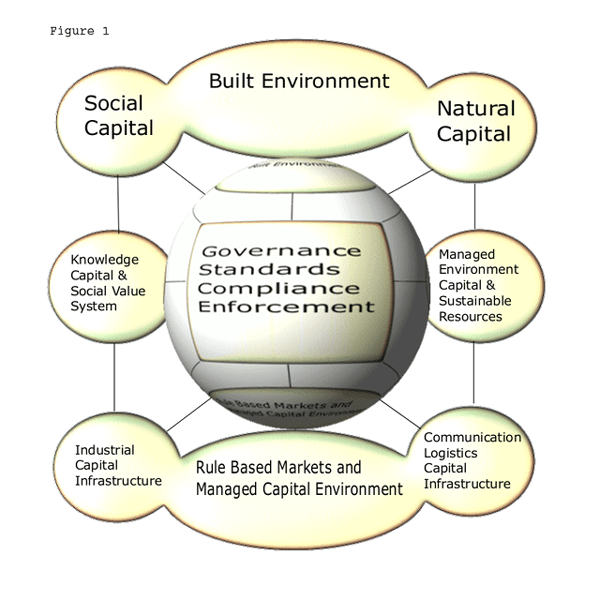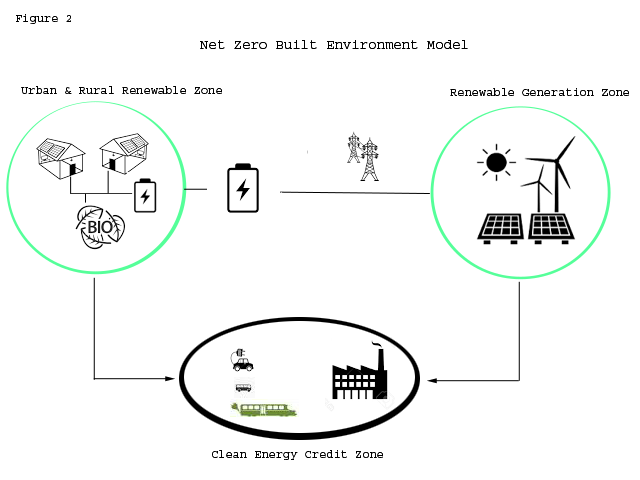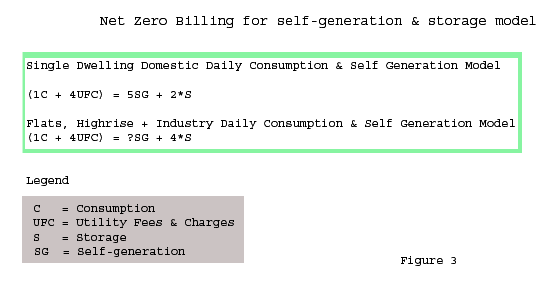
The ‘Universal Development Matrix is relevant to developing and developed nation. It can be readily deployed to address a range of local community, national and business project development targets and issues. It is highly relevant in the design, development and deployment of Australia’s National Clean Energy Master Plan.
Finkel’s Time of Future Past
The ‘Finkel Review’ published in 2017 advocated a technology neutral CET (Clean Energy Target) mechanism. On balance, this statement is nonsense! It is nonsense because any renewable energy target requires the setting of basic industry and market rules. These rules must describe the following in some detail:- The CET must be cheaper than any none renewable generation option.
- The CET generation option mix must be acceptable to the electorate, e.g. not nuclear if the electorate does not agree to a nuclear option.
- The CET is always a 100% renewable energy target achievable in a defined and agreed time frame.
- The CET is always a 100% renewable energy generation protocol under an agreed fixed price energy transmission and distribution capacity supply reliability guarantee.
- The CET is always a 100% renewable energy generation protocol that will not increase a nation’s international emission obligations during the transition phase.
- The CET is always a 100% renewable energy generation protocol that will not cause hardship to any citizen irrespective of the mix of energy generation chosen.
- The CET does not favour any stakeholder or allow the manipulation of energy market mechanisms to promote anti-competitive behaviour and entrench cartel control of the market in part or its entirety.
- The CET has a strong and independent regulatory framework that includes an Electricity Pricing Commission that save guards the market from arbitrary price increase, ambit claims, hidden fees and pass through charges.
What the ‘Finkel Review’ neglected to tell us is that the current wholesale energy price including the fossil fuel subsidy program puts an effective price on carbon above $55 per ton. The Chief Scientist failed to point out that Australia is paying a very high price for allowing the gas market to set the electricity spot price. The emergency use of gas fired power stations in the NEM (National Electricity Market) is less than 30 days per year. So the claim that Australia needs to drill new wells for conventional and unconventional gas is at best misleading. A survey of national gas reserves earmarked for energy generation predict an average shortage of 1 day per year. This is significantly less than the crisis scenario presented by the industry to hysterical politicians and paranoid punters. In terms of the national clean energy roadmap 2050, the consensus is that the domestic gas sector has effectively priced itself out of the market. The industry should really focus on consolidating its export markets. North African competition and the emergence of the Indian gas market by 2030 will put significant pressure on international gas prices and Australian market influence.
The argument that the CET must be technology neutral is one of those dumb political statements that really should be shoved where it belongs. At best we could justify the political dumbness as an olive branch to the LNP right wing extremists. At worst it is a confused utterance that ignores price realities with a warped idea of risk management and the dreams of another time and place. A good design uses the most price competitive and best technology of the time. A great design adjusts to future technologies without any changes to the original design. All Australians are well aware of the NBN farce. It is not what I call a great design or indeed a rational project management outcome. Knowing how incompetent government is in the area of managing large scale complex technology based projects we have to ask ourselves a simple question. Should anyone trust our politicians to design, manage and build a '21st Century Clean Energy System' without reference to the best practice universal development methodology, engineering and governance standards? In my opinion, no!
Filling the Leadership Vacuum
If you run the numbers on the CET the LNP is prepared to accept under the Paris accord and the target the state and federal labour party are promising there is very little difference. Whether we are talking about a RET or a CET makes no difference. In both cases the target is 100%. There has always been only one 100% target. The difference is whether we get there by 2050, 2065 or 2070. Assuming we start in 2020 the effective target is 20% every five to seven years. This is irrespective of whether you believe the LNP, Labour or the Greens . Australia has to reduce its emissions by 20% every five to seven years from 2020 to meet its international obligations and raise its national productivity. Doing both of these things at the same time is clearly not in the political innovation vocabulary of the Turnbull government. Reducing emissions by 20% every five to seven years was clearly beyond the ‘Finkel Review’. It doesn’t seem to fit into the jobs and growth agenda because in order to achieve both, the government has to involve itself in a very messy wealth distribution and wide ranging inequality debate. Detailed forensics and inclusive public debate are definitely not something a modern politician wants to engage the electorate in. Mimicry, party tricks and cheap one liners are all the go these days! Someone told me that politicians don’t want us to panic. Oh yeah! Is that why the Turnbull government places no necessary urgency on defining a credible CET and CEC mechanism? After all, the mad monk and his jack boot extremists would have us believe that this is a socialist conspiracy hatched by crazy heathens and homeless LGBTI nut bags intent on bringing back the carbon tax. Since our current energy policy has created an effective carbon price above $55 per ton, any return to a fixed price carbon mechanism will only be as a compliance and enforcement tool. Do we need to worry about any of the old school right wing political hacks testing our patience with their drivel? In a future NZE energy market operating in a NZB consumer driven environment the actual question is, how do we transitioning the Utilities?
Australia is an island of dispersed demographic centres. The majority of us live on or near the coast. The location and distribution of our regional towns and major cities make the entire country absolutely perfect for the implementation of a ‘Just in Time’ DER ( Distributed Energy Resource ) management model. As the energy market moves beyond the dumb shunting of electrons from A to B we are appreciating the integration of a ‘Just in Time’ demand management model within a delayed capacity supply market. This allows us to consider an entirely new energy market that will force existing stakeholders to adapt to new competition conditions. The CET and CEC $ value model suited to Australian conditions incorporates both a NZE (Net Zero Emission) design and a NZB (Net Zero Billing) consumer outcome. This is demonstrated in figure 2. A critical design element is the decision for a CET or similar clean energy transition mechanism. I have already said that irrespective of which party is in government at either state or federal level, the interim target is a combined 20% clean energy generation, energy efficiency and energy storage gain every five to seven years from 2017 - 2020 onwards. This CET is set by Australia’s international obligations and by the commitments both major parties have expressed. These commitments leave very little time for sorting out the design and project management details of ‘How’ this is to be achieved.
As you can see in the NZE model (figure 2), the most effective manner of achieving this mandatory 20% target every five to seven years is the deployment of a closed loop energy management platform. Each urban and rural clean energy development zone is both a net zero emissions zone as well as a net zero billing precinct. Grid embedded energy storage is supplemented by additional storage options for each renewable energy generation zone with localized storage in the closed urban and rural renewable precinct. This maximizes the grid management impact of the FCM (Frequency Control Market) and VCM (Voltage Control Market) in a net zero consumer billing environment, whilst distributing CEC’s throughout the model at the lowest cost. If we add additional storage and localized self-generation into the industry segment identified as the Clean Energy Credit Zone at a 20% level every five to seven years, the entire model would require minimum reliance on gas or coal generation over the projected CET time frame. Thus, allowing the orderly retirement of aging coal plants without the construction of new gas power stations during the transition phase. The progressive quarantining of gas fired power stations in this model will put further downward pressure on the wholesale spot market with no impact on grid stability and energy supply reliability. A key risk management function of the model is the achievement of critical self-generation and storage reliability and the progressive phase out of all fossil fuel subsidies.
A comprehensive national building efficiency, self-generation and storage requirement in addition to the model will impact positively on the capacity demand side of the energy market. Incremental efficiency targets for new and existing buildings of 20% every five to seven years can easily be legislated for all government, commercial and domestic buildings. A similar regime for public transport and all commercial and government fleet vehicles can merry with the plans of car manufacturers to progressively switch to the manufacture of clean emission vehicles. A simple 240 volt white goods and appliances phase out by 2030 and a switch to high efficiency 12 volt devices would side step the current aggregate demand management debate. The impact of behind the meter technology has the Utilities petrified. The only reason Utilities are pushing their right to access behind the meter peer to peer data management technology is because their entire business model is predicated on the privilege of owning consumer energy data. It is this same privilege that underpins the Utility right of charging consumers hidden fees and passing on unspecified charges without having to justify price gauging to a strong and independent Energy Pricing Commission. All these privileges are eliminated as peer to peer data management, customer self-generation, storage and consumer data ownership provide greater competition and market transparency.

Figure 3 clearly show the inequality in the current energy market. Rooftop solar customers in Australia must generate an additional four daily units ( 4 UFC) of energy to achieve a net zero energy bill without storage.
The Utility proposed aggregated demand management model would provide the Utility with unprecedented access to any smart appliance, including any home automation and energy storage devices. It would also allow the Utility to profit from this activity without any guarantee of a fair return to the consumer. Utility ownership of consumer energy consumption data as well as all self-generation and stored energy data and any functions associated with this data belong to the consumer / prosumer. Without legislation that provides binding protection to consumer/ prosumer energy data from Utilities any CET design will fail. Without national consumer energy data validation and verification requirements that are binding and enforceable on Utilities any CET will fail. Figure 3 shows that consumers are already struggling to gain transparency of existing Utility fees and charges because of Australia’s weak regulatory, consumer protection and privacy laws. There is simply no guarantee that this will change under the Turnbull government. The resolution of this matter is essential before Australia implements a national CET and CEC mechanism.
Whether consumers / prosumers agree to a NET Zero Energy Billing contract in return for 3rd party access to their rooftop solar and battery is an entirely different matter. Most Australians would see little fault with an agreed trade off under a zero privacy intrusion provision with a 100% behind the meter energy data transparency and data ownership guarantee. This is however not the Utility aggregate demand management model recently tabled in Brisbane. A simple piece of legislation that phases out all 240 white goods and appliances and mandates high efficiency 12 volt devices would eliminate the Utilities demand for behind the meter access. It would also sharpen the focus of discussion on consumer rights and privacy. This is the legitimate debate we must have. No one is interested in wasting time on closed door lobbying and dodgy car park dealings designed to hobble outcomes in favour of existing market participants. It is time Minister Frydenberg rolls up his sleeves and draws a line in the sand. No more claim fencing and pissing on consumer rights. We all want an affordable, reliable and clean 21st century energy system. Here is your model, drawn and illustrated in plain text Mr. Turnbull. There are no more excuses.
No comments:
Post a Comment